Timur: Brutal Military Leader And His Desire To Conquer But Not To Rule
A. Sutherland - AncientPages.com - Historical records confirm that the greatest military campaigns of conquest were often accomplished by the robust nomadic and semi-nomadic peoples inhabiting Central Asia.
Their horsemen were perfectly trained and could defeat the armies of any settled civilization. These Asian fighters went to battle with no fear because they were inspired by their most skilled leaders such as the Mongol Genghis Khan or the Tatar Timur, also known as Timur the Lame or Tamerlane.
Today’s article is devoted to Timur, who became one of the most successful military leaders in history.
Timur Rose To Power Despite A Serious Physical Disability
Timur was a conqueror born into a tribe of horsemen in the area of Central Asia that is today Uzbekistan and Tajikistan. As a young man, Timur led a band of lawless fighters who robbed traveling merchants and engaged themselves in problems with local tribes.
Left: Timur -Turco-Mongol Conqueror. Source ; Right: A Timurid-era illustration of Timur.
One day, he suffered an arrow wound that left his right arm and leg partially paralyzed. He was able to ride a horse but he could only walk short distances, otherwise needing to be carried.
His crippling injuries did not stop Timur from rising up and being one of the most feared leaders of the 14th and early 15th centuries.
Sophisticated, Intelligent And Very Cruel Ruler
Timur spoke Persian, Mongolian, and Turkish. He was a learned ruler, who respected scholars, enjoyed their company much, and was generous to them.
His physical strength was obviously insufficient but his mental capabilities were perfect. He was described as very intelligent; he was a first-class chess player and his brain was capable to come up with the best military strategies.
He is regarded as a military genius, a highly skilled strategist with an unusual ability to work within a highly fluid political structure to win and maintain a loyal following of nomads during his rule in Central Asia.
He eventually came to rule Samarkand and Balkh, known to the Ancient Greeks as Bactra, giving its name to Bactria, a noble and great city as described by Marco Polo, an Italian explorer, merchant, and writer.
Timur’s successful military conquest was motivated when his fellow nomadic warrior, Tokhtamysh, had reformed the Mongol Golden Horde and plundered northern Persia in 1385.
Timur Defeated His Rival And Conquered Others
Timur’s response was to attack and conquer his rival and it happened. The two of them confronted their powerful armies. The final battle took place at the River Terek in 1395 and Timur was victorious. His army significantly devastated Tokhtamysh’s territory and in consequence, the Golden Horde ceased to exist.
It was for other campaigns and soon Baghdad and Shiraz were destroyed. In 1387, Timur entered Isfahan and the city immediately surrendered; however, inhabitants of Isfahan did not like high taxes, and the collectors sent by Timur were killed along with some of his soldiers.
Timur's mausoleum is located in Samarkand, Uzbekistan. Source
In response, Timur ordered the massacre of the city's citizens; the death toll was estimated between 100,000 and 200,000. An eye-witness counted more than 28 towers constructed of about 1,500 heads each.
Timur’s Fearless Army
His soldiers included mounted and highly skilled bowmen. They were well-organized; each the so-called ‘tuman’ (ten thousand men) were divided into thousands, hundreds, and tens. There was strong discipline and Timur controlled his army’s operations, such as building pontoon bridges and the soldiers’ camps.
As an army leader, he was very cruel and it is said he expected his soldiers to be the same.
Timur’s very successful military operations were not systematically planned but were rather based on surprising attacks.
Timur Was Reckless And Brutal
For approximately four decades, he attacked and conquered Baghdad, Damascus, and Delhi, where his brutality became particularly evident. He ordered 100,000 Indian prisoners to be killed. It is said this was done in one day. Then, there were other Arab, Georgian, Persian cities sacked and completely destroyed and their populations massacred. His armies reached the borders of Western Europe but his greatest desire was to conquer China.
The great conqueror was still unsatisfied. He fought many successful battles, expanded his territories, and finally advanced to the Aegean, where he seized a Christian crusader castle at Izmir, Turkey, before returning to Samarkand as victorious.
He still wanted more; he wanted to defeat the Ming Empire in China.
Unfortunately for him, it never happened because he died two years later, in 1405 during a winter campaign with his ambitious quest unfulfilled.
Written by – A. Sutherland - AncientPages.com Senior Staff Writer
Copyright © AncientPages.com All rights reserved. This material may not be published, broadcast, rewritten or redistributed in whole or part without the express written permission of AncientPages.com
Expand for referencesReferences:
Stier R. Holms B. S. Tamerlane The Ultimate Warrior
Marozzi J. Tamerlane: Sword of Islam, Conqueror of the World
Payne R. The World of Art
More From Ancient Pages
-
 Jack The Ripper Letter Mystery Solved By Forensic Linguist
Archaeology | Feb 1, 2018
Jack The Ripper Letter Mystery Solved By Forensic Linguist
Archaeology | Feb 1, 2018 -
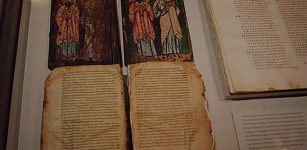 Codex Washingtonianus Contains A Passage Not Seen In Any Other Biblical Manuscript
Artifacts | Aug 4, 2015
Codex Washingtonianus Contains A Passage Not Seen In Any Other Biblical Manuscript
Artifacts | Aug 4, 2015 -
 On This Day In History: Coverdale Bible Printed In English For The First Time – On Oct 4, 1535
News | Oct 4, 2016
On This Day In History: Coverdale Bible Printed In English For The First Time – On Oct 4, 1535
News | Oct 4, 2016 -
 The Day When The Sun Did Not Come Out – Bizarre Event In 1780, New England
Featured Stories | Apr 18, 2023
The Day When The Sun Did Not Come Out – Bizarre Event In 1780, New England
Featured Stories | Apr 18, 2023 -
 Monks Mound In Ancient Cahokia Was Not What Scientists Previously Thought – New Study
Archaeology | Jul 21, 2022
Monks Mound In Ancient Cahokia Was Not What Scientists Previously Thought – New Study
Archaeology | Jul 21, 2022 -
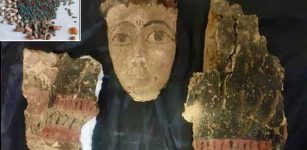 Relics Dated To Byzantine And Late Period Unearthed In Meir Necropolis In Assiut, Upper Egypt
Archaeology | May 15, 2023
Relics Dated To Byzantine And Late Period Unearthed In Meir Necropolis In Assiut, Upper Egypt
Archaeology | May 15, 2023 -
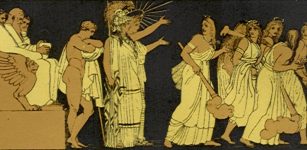 Legendary Furies – Angry And Monstrous Women Of The Underworld
Featured Stories | Dec 23, 2014
Legendary Furies – Angry And Monstrous Women Of The Underworld
Featured Stories | Dec 23, 2014 -
 Mnemosyne: Powerful Greek Goddess Of Memory, Bridge Between The Past And The Future
Featured Stories | Aug 2, 2021
Mnemosyne: Powerful Greek Goddess Of Memory, Bridge Between The Past And The Future
Featured Stories | Aug 2, 2021 -
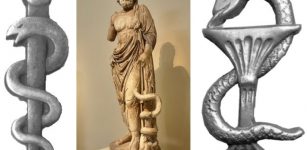 Why Is A Snake Symbol Of Medicine And Pharmacies?
Ancient History Facts | Jan 15, 2018
Why Is A Snake Symbol Of Medicine And Pharmacies?
Ancient History Facts | Jan 15, 2018 -
 Living Descendant Of Legendary Native American Leader Sitting Bull Confirmed Using DNA From Hair
Archaeology | Oct 27, 2021
Living Descendant Of Legendary Native American Leader Sitting Bull Confirmed Using DNA From Hair
Archaeology | Oct 27, 2021 -
 Tomb Of Last Ruler Of A Sunken Kingdom Remains An Ancient Mystery
Featured Stories | Mar 24, 2021
Tomb Of Last Ruler Of A Sunken Kingdom Remains An Ancient Mystery
Featured Stories | Mar 24, 2021 -
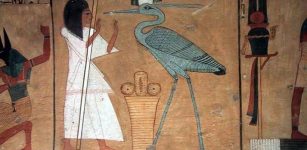 Mythical Egyptian Bennu Bird And Deity
Egyptian Mythology | Jun 5, 2016
Mythical Egyptian Bennu Bird And Deity
Egyptian Mythology | Jun 5, 2016 -
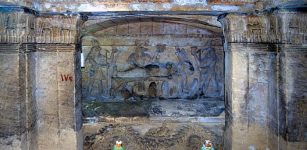 Catacombs Of Kom El Shoqafa – Largest Roman Burial Site In Egypt
Featured Stories | Feb 8, 2021
Catacombs Of Kom El Shoqafa – Largest Roman Burial Site In Egypt
Featured Stories | Feb 8, 2021 -
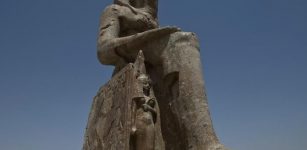 Remarkable Massive Statues Of Pharaoh Amenhotep III Discovered In Luxor
Archaeology | Mar 25, 2014
Remarkable Massive Statues Of Pharaoh Amenhotep III Discovered In Luxor
Archaeology | Mar 25, 2014 -
 The Seal Of Solomon, The Fifth Element And The Andromeda Constellation Reveal An Intriguing Connection
Ancient Symbols | Mar 8, 2018
The Seal Of Solomon, The Fifth Element And The Andromeda Constellation Reveal An Intriguing Connection
Ancient Symbols | Mar 8, 2018 -
 On This Day In History: Sir Thomas Brisbane, Astronomer, Soldier And Governor Was Born – On July 23, 1773
News | Jul 23, 2016
On This Day In History: Sir Thomas Brisbane, Astronomer, Soldier And Governor Was Born – On July 23, 1773
News | Jul 23, 2016 -
 Ancient Marble Statue Of Sphinx Discovered In Tang Dynasty Tomb
Archaeology | Dec 16, 2015
Ancient Marble Statue Of Sphinx Discovered In Tang Dynasty Tomb
Archaeology | Dec 16, 2015 -
 Scientists Argue Over The Mysterious Void Discovered Inside The Great Pyramid Of Giza
Archaeology | Nov 8, 2017
Scientists Argue Over The Mysterious Void Discovered Inside The Great Pyramid Of Giza
Archaeology | Nov 8, 2017 -
 Medieval Magic – A Service Industry Used By Rich And Poor Alike
Featured Stories | Oct 29, 2019
Medieval Magic – A Service Industry Used By Rich And Poor Alike
Featured Stories | Oct 29, 2019 -
 Ancient Jaintia Kingdom And The Garden Of Monoliths And Dolmens
Featured Stories | Nov 8, 2016
Ancient Jaintia Kingdom And The Garden Of Monoliths And Dolmens
Featured Stories | Nov 8, 2016


